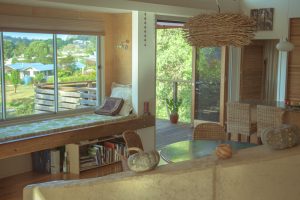A green home consumes minimal energy and is built with energy-efficient materials. What makes this popular today in architecture and design is the idea of eco-friendly living and more money saved in the process. If reducing your carbon footprint doesn’t seem appealing to you as a consumer, think about the significant savings you can get on your utility bills from opting for a greener home design.
But what differentiates a green home from a traditional architecture? How does green building work? What are the benefits involved? Here are three points you should keep in mind:
Passive House
 The concept of a passive house is creating an energy-efficient home with the least amount of heat load or consumption. Here is where big windows are strategically positioned so it can easily let in sunlight and heat during the day. This will let you reduce the use of artificial lighting, heating systems, and cut down on energy consumption. Moreover, passive houses are typically smaller to reduce floor space and the energy needed to provide heat in indoor spaces.
The concept of a passive house is creating an energy-efficient home with the least amount of heat load or consumption. Here is where big windows are strategically positioned so it can easily let in sunlight and heat during the day. This will let you reduce the use of artificial lighting, heating systems, and cut down on energy consumption. Moreover, passive houses are typically smaller to reduce floor space and the energy needed to provide heat in indoor spaces.
Insulation and air-tight windows and doors are also essential in keeping the heat in. Some passive houses also incorporate heat recovery ventilation systems that aim to recycle heat produced by cooking or using a blow dryer.
Sustainable home design and architecture is ideal for new buildings, but other homeowners restructure or refurbish their homes to achieve the same objective.
Net zero energy
This means no amount of energy is derived from fossil fuels or non-renewable energy. In this case, the goal is to use only alternative or renewable energy sources and as little as possible of that energy per month. That can be achieved by producing power through solar panels and wind turbines. With the cost of renewable energy becoming more and more affordable these days, many are now opting for net zero energy to minimise their carbon footprint. This can cut down the energy cost of a household significantly. Moreover, incentives and government rebates can be gained from producing one’s energy.
Deep energy retrofit
This process involves the analysis of the whole structure of an existing building or a plan for a new structure to integrate energy efficiency into each aspect of the design and construction. The goal in this process is to build a structure that can increase energy savings dramatically through the incorporation of energy-efficient equipment, ventilation, insulation, moisture management, air sealing, and also choosing durable and eco-friendly materials. Unlike a passive house, deep energy retrofit follows careful detailing, in-depth planning, and science to build the best green home possible.
Whether you are switching to 100% green energy, building a sustainable home is very beneficial. Sustainable designs will benefit the user immensely and contribute to a better environment. If you are renovating or have plans to build a new home, contact sustainable home design assessment experts to know if the design you intend to use is sustainable. The experts will recommend what you can do to improve on your design and make it perfect.